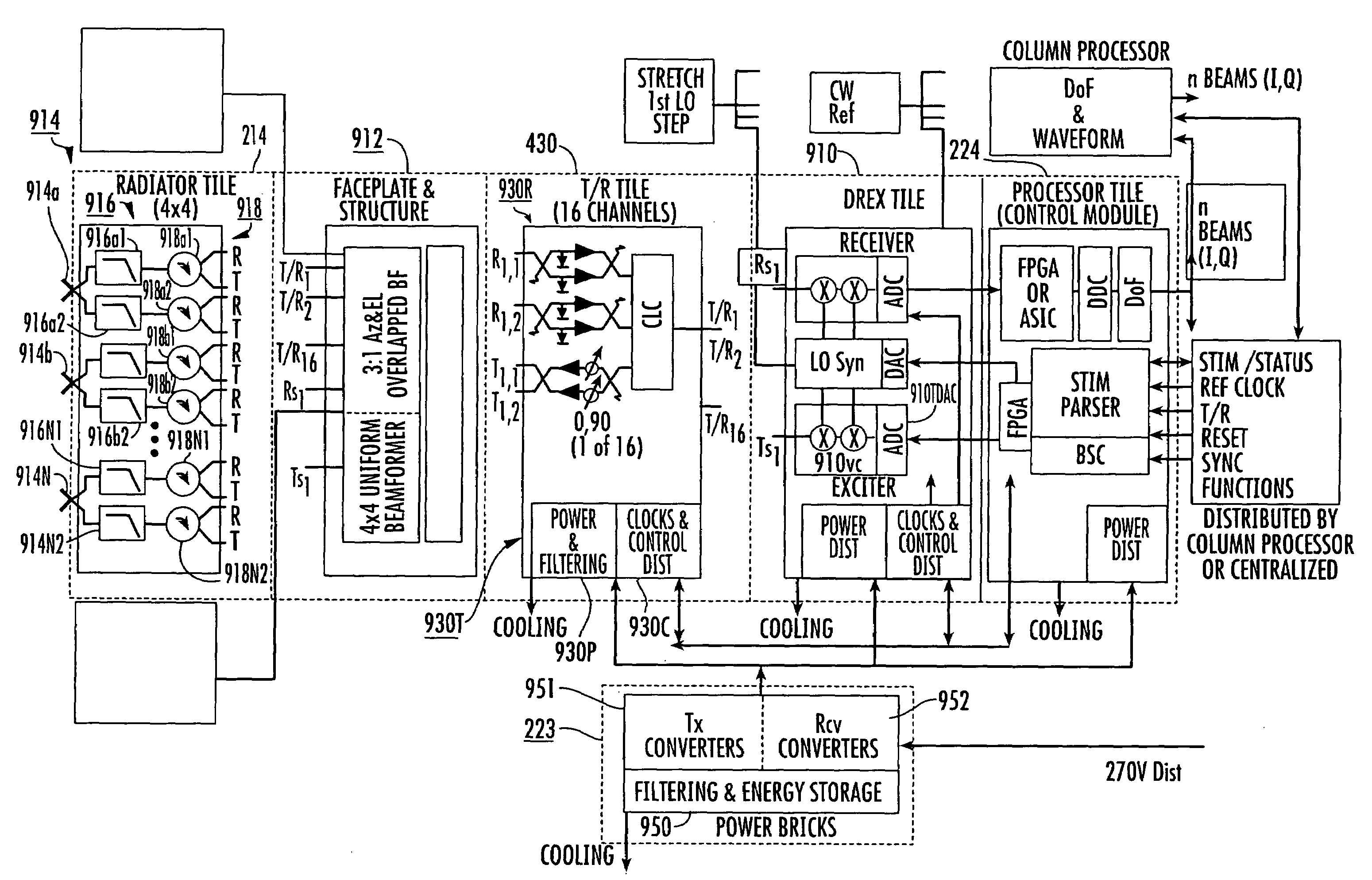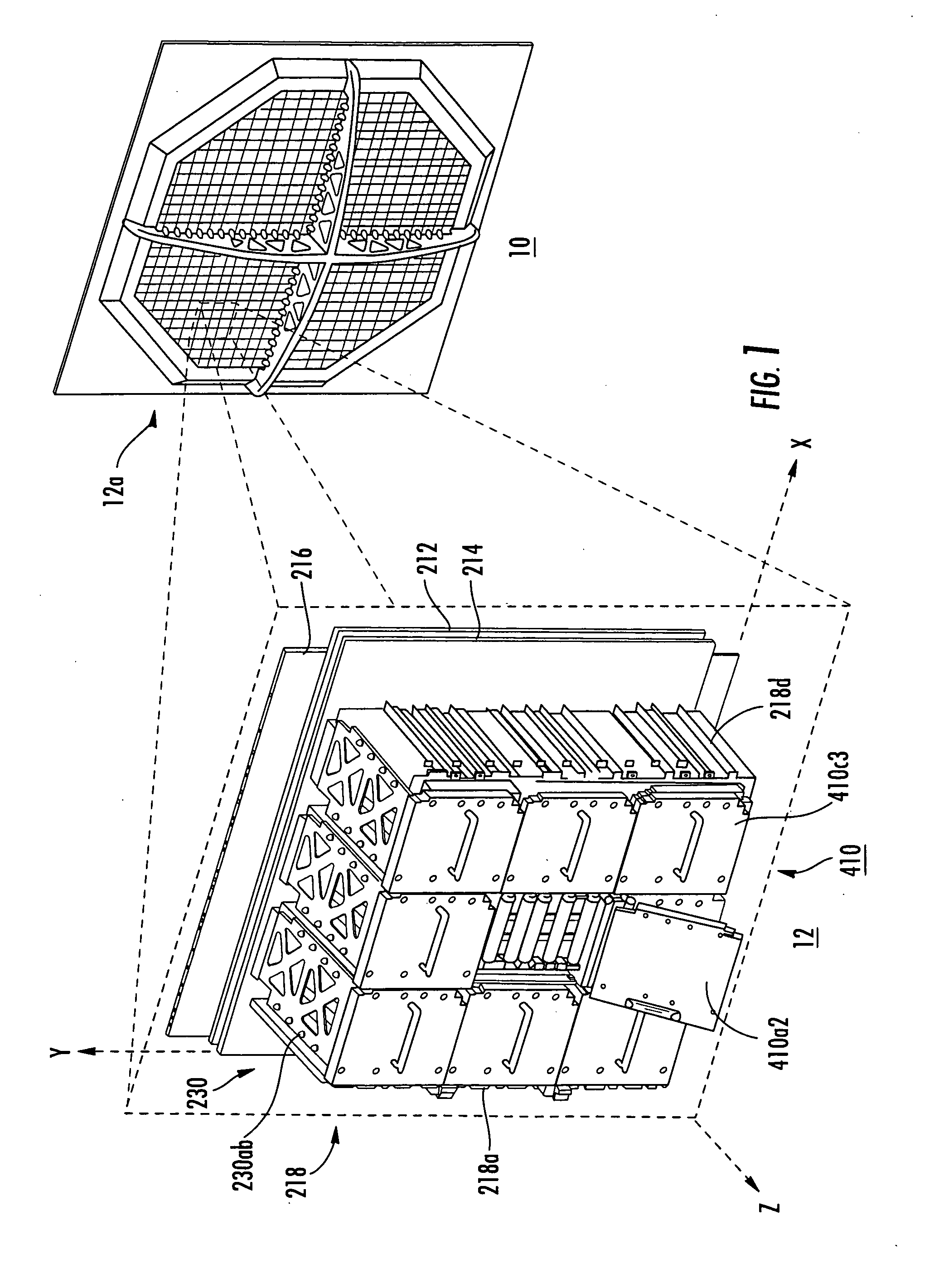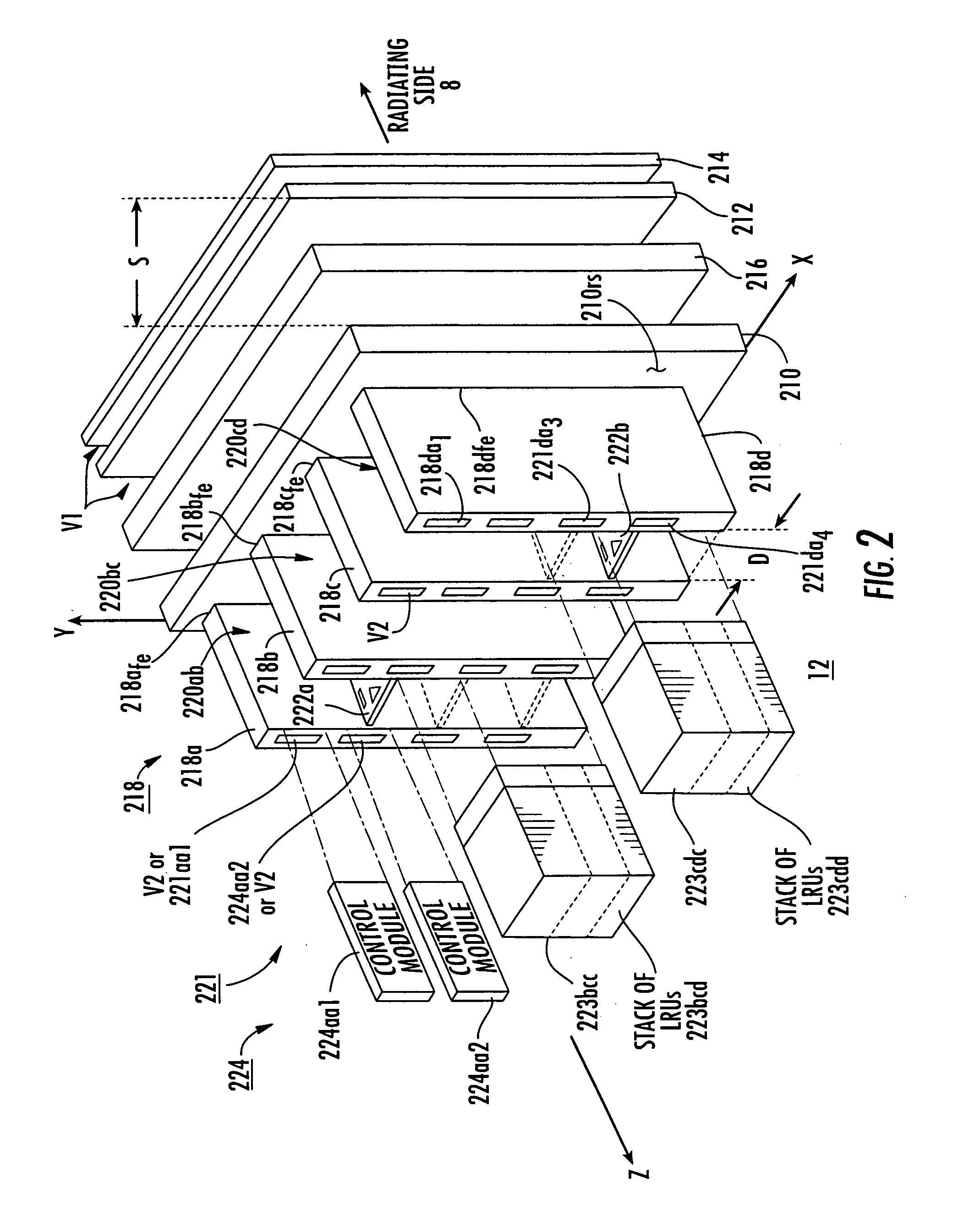Antenna with compact LRU array
a technology of compact array and antenna, applied in the direction of individually energised antenna array, instruments, using reradiation, etc., can solve the problems of early failure or increased maintenance need, reflector-type antennas are subject to some disadvantages, and reflector antennas are less satisfactory
- Summary
- Abstract
- Description
- Claims
- Application Information
AI Technical Summary
Benefits of technology
Problems solved by technology
Method used
Image
Examples
Embodiment Construction
[0021]Thermal management or heat removal from the various active modules of the system is provided by transfer of the heat from the modules to the various cold plates. More particularly, it has been discovered that in high power systems, the radiating elements of the antenna array 214 of can “dissipate” (produce) significant heat, which, in conjunction with the heat produced by the transmit-receive elements, may be more than can be conveniently carried away by a single cold plate. For this reason, a set of two mutually parallel cold plates is used, one to sink heat from the radiating elements, and one to sink heat from the TR modules and the remaining LRUs. The beamformer does not generally produce a great deal of heat, but is placed between the two planar cold plates due for convenience and electrical requirements.
[0022]FIG. 1 is a simplified perspective or isometric view of the rear of an octagonal array antenna 10 illustrating an array 12a of antenna electronic element support st...
PUM
 Login to View More
Login to View More Abstract
Description
Claims
Application Information
 Login to View More
Login to View More - R&D
- Intellectual Property
- Life Sciences
- Materials
- Tech Scout
- Unparalleled Data Quality
- Higher Quality Content
- 60% Fewer Hallucinations
Browse by: Latest US Patents, China's latest patents, Technical Efficacy Thesaurus, Application Domain, Technology Topic, Popular Technical Reports.
© 2025 PatSnap. All rights reserved.Legal|Privacy policy|Modern Slavery Act Transparency Statement|Sitemap|About US| Contact US: help@patsnap.com



